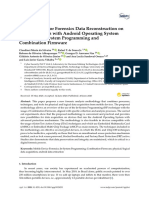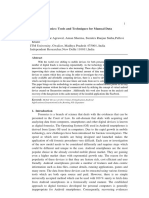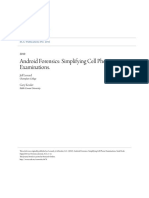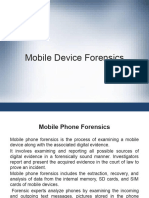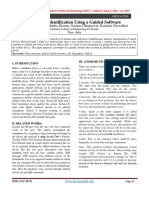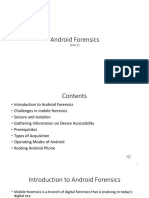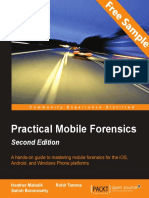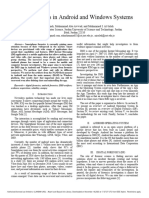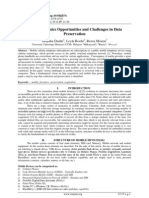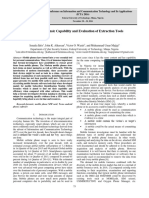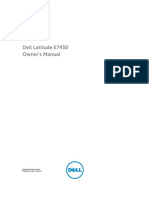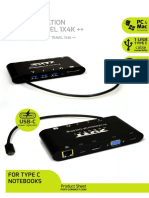0% found this document useful (0 votes)
5 views10 pagesForensics of Location Data Collected by Google Android Mobile Devices
This paper examines the forensic investigation of location data collected by Android mobile devices, focusing on data extraction and analysis methods. It highlights the challenges in mobile forensics due to proprietary hardware and varying Android versions, emphasizing the importance of following a defined process model for investigations. The study also discusses the types of location data stored by Android and the tools available for their extraction and analysis.
Uploaded by
ayan19programmerCopyright
© © All Rights Reserved
We take content rights seriously. If you suspect this is your content, claim it here.
Available Formats
Download as PDF, TXT or read online on Scribd
0% found this document useful (0 votes)
5 views10 pagesForensics of Location Data Collected by Google Android Mobile Devices
This paper examines the forensic investigation of location data collected by Android mobile devices, focusing on data extraction and analysis methods. It highlights the challenges in mobile forensics due to proprietary hardware and varying Android versions, emphasizing the importance of following a defined process model for investigations. The study also discusses the types of location data stored by Android and the tools available for their extraction and analysis.
Uploaded by
ayan19programmerCopyright
© © All Rights Reserved
We take content rights seriously. If you suspect this is your content, claim it here.
Available Formats
Download as PDF, TXT or read online on Scribd
/ 10

